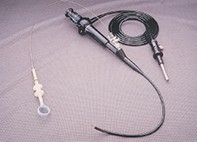Peer Reviewed
Feature Article Men’s health
Lower urinary tract symptoms in the male: benign prostatic hyperplasia
Abstract
The treatment of lower urinary tract symptoms is tailored according to the degree of bother, the severity of the symptoms, the wishes of the patient, and a full discussion of each option, ranging from conservative measures to surgery.
Key Points
- The degree to which the urinary symptoms affect the patient’s quality of life is very important. Assessing the ‘degree of bother’ helps determine the man’s perception of the severity of his symptoms and contributes to both the patient and physician deciding on the most appropriate management strategy.
- In most patients, the symptoms gradually worsen over the years, but conservative measures will often suffice for a long time, together with follow up.
- Transurethral resection of the prostate (TURP) gives the best success rate in decreasing symptoms, especially when the symptoms are severe.
- Transurethral incision of the prostate (TUIP) is better suited to the smaller prostate; it has fewer side effects than TURP.
- There are now several alternative surgical techniques for BPH. Some are promising, but all are still experimental.
Purchase the PDF version of this article
Already a subscriber? Login here.

